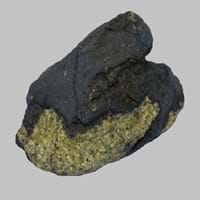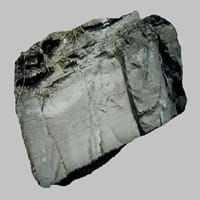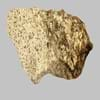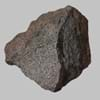Definition
Basanite is a black basaltic rock which mainly contains plagioclase, augite, olivine and nepheline and is formerly used as a touchstone
A sedimentary rock, deposit of a submarine turbidity currents and are composed of layered particles
Origin
Unknown
European Foreland Basins
Discoverer
Unknown
Arnold H. Bouma
Etymology
From Latin basanites + -ite
From Medieval Latin turbiditas, from Latin turbidus (turbid). Turbidity current is from 1939
Class
Igneous Rocks
Sedimentary Rocks
Sub-Class
Durable Rock, Hard Rock
Durable Rock, Soft Rock
Group
Not Applicable
Not Applicable
Other Categories
Fine Grained Rock, Opaque Rock
Coarse Grained Rock, Fine Grained Rock, Opaque Rock
Texture
Aphanitic to Porphyritic
Mud-rich, Sandy
Color
Black, Brown, Green, Grey, Red, White
Black, Brown, Colourless, Green, Grey, Pink
Durability
Durable
Durable
Scratch Resistant
Yes
Yes
Appearance
Glassy or Pearly
Dull and Banded
Interior Uses
Decorative Aggregates, Homes
Bathrooms, Countertops, Decorative Aggregates, Flooring, Homes, Interior Decoration
Exterior Uses
As Building Stone, Garden Decoration, Office Buildings
As Building Stone, As Facing Stone, Paving Stone, Garden Decoration
Other Architectural Uses
Whetstones
Curbing
Construction Industry
Arrowheads, Construction Aggregate, Cutting Tool, Spear Points
As Dimension Stone, Cement Manufacture, Construction Aggregate, for Road Aggregate, Making natural cement
Medical Industry
Not Yet Used
Not Yet Used
Antiquity Uses
Artifacts, Monuments
Artifacts, Monuments, Sculpture
Commercial Uses
As a touchstone, Creating Artwork, Gemstone, In fire-starting tools, Manufacture of tools, Metallurgical Flux, Jewelry, To ignite fire, Used in flintlock firearms
Cemetery Markers, Creating Artwork
Types
Nepheline-Basanite, Analcite-Basanite and Leucite-Basanite
Not Available
Features
Clasts are smooth to touch, Easily splits into thin plates, Has High structural resistance against erosion and climate, Used as a touchstone
High silica content, Host Rock for Lead
Archaeological Significance
Famous Monuments
Data Not Available
Data Not Available
Sculpture
Not Yet Used
Used
Famous Sculptures
Not Applicable
Data Not Available
Pictographs
Not Used
Used
Petroglyphs
Not Used
Used
Figurines
Not Yet Used
Used
Formation
Basanite is a fine-grained, hard rock that forms when bits of lava shoot out of volcanoes.
Turbidite is a type of sedimentary rock formed when a river carries or transports pieces of broken rock as it flows. These particles then settle down and are subjected to high temperature and pressures hence forming Turbidite.
Mineral Content
Augite, Feldspar, Ilmenite, Olivine, Plagioclase
Coesite, Quartz, Sand
Compound Content
Potassium Oxide, Sodium Oxide, Silicon Dioxide
CaO, Carbon Dioxide, MgO
Types of Metamorphism
Burial Metamorphism, Cataclastic Metamorphism, Contact Metamorphism, Regional Metamorphism
Not Applicable
Types of Weathering
Chemical Weathering, Mechanical Weathering
Biological Weathering, Chemical Weathering, Mechanical Weathering
Types of Erosion
Chemical Erosion, Coastal Erosion, Glacier Erosion, Sea Erosion, Water Erosion, Wind Erosion
Chemical Erosion, Coastal Erosion, Sea Erosion, Water Erosion, Wind Erosion
Grain Size
Fine Grained
Fine to Coarse Grained
Fracture
Uneven, Splintery or Conchoidal
Splintery
Streak
White
White, Greenish White or Grey
Porosity
Highly Porous
Very Less Porous
Luster
Waxy and Dull
Metallic
Compressive Strength
Not Available
Cleavage
Non-Existent
Disjunctive
Specific Gravity
2.5-2.8
2.46-2.73
Transparency
Translucent to Opaque
Opaque
Density
2.7 g/cm3
1.6-2.5 g/cm3
Resistance
Heat Resistant, Impact Resistant, Pressure Resistant, Wear Resistant
Heat Resistant
Deposits in Eastern Continents
Asia
Not Yet Found
Not Yet Found
Africa
Uganda
Western Africa
Europe
Germany, Hungary, Italy, Spain
Austria, Belarus, Romania, Switzerland, United Kingdom
Others
Greenland, Mid-Atlantic Ridge
Not Yet Found
Deposits in Western Continents
North America
USA
Canada, USA
South America
Bolivia, Brazil
Brazil, Colombia
Deposits in Oceania Continent
Australia
New South Wales, New Zealand, Queensland, South Australia, Western Australia
New Zealand, Western Australia
All about Basanite and Turbidite Properties
Know all about Basanite and Turbidite properties here. All properties of rocks are important as they define the type of rock and its application. Basanite belongs to Igneous Rocks while Turbidite belongs to Sedimentary Rocks.Texture of Basanite is Aphanitic to Porphyritic whereas that of Turbidite is Mud-rich, Sandy. Basanite appears Glassy or Pearly and Turbidite appears Dull and Banded. The luster of Basanite is waxy and dull while that of Turbidite is metallic. Basanite is available in black, brown, green, grey, red, white colors whereas Turbidite is available in black, brown, colourless, green, grey, pink colors. The commercial uses of Basanite are as a touchstone, creating artwork, gemstone, in fire-starting tools, manufacture of tools, metallurgical flux, jewelry, to ignite fire, used in flintlock firearms and that of Turbidite are cemetery markers, creating artwork.










